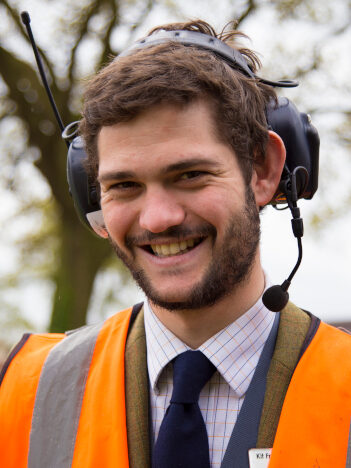A new research paper, produced by four Harper Adams University academics, has helped to demonstrate that arable crop production using autonomous equipment is both technically and economically feasible and could help boost medium-sized farms.
The paper, published in the scientific journal Precision Agriculture, uses experience from the university’s Hands Free Farm project to demonstrate that farms can produce arable crops at close to a minimum per unit cost level. This could mean that the use of autonomous equipment could see greater independence for farmers and be a chance for smaller farms to become cost competitive.
It was written by Professor James Lowenberg-DeBoer, Professor Richard Godwin, Professor Karl Behrendt and senior lecturer Kit Franklin and is said to be the first of its kind to be published.
Professor Lowenberg-DeBoer said: “This paper is the first scientifically reviewed paper out on either the Hands Free Hectare or the Hands Free Farm and published in a peer-reviewed journal. It focuses on the Hands Free Farm experience – and looks at the economic feasibility of robotics of the type which were used on the Hands Free Hectare.
“The Hands Free Farm is a great place to study the economics of crop robotics, which is presently a very sparsely researched area. As far as I can tell, this is the one place on earth – certainly within the public sector -where you can get information about a whole cycle for comparing results of the kind we did, particularly with autonomous equipment.”

The nature of the equipment used on the Hands Free projects was also beneficial to the study, Professor Lowenberg-DeBoer added: “Because the Hands Free Hectare used retrofitted conventional equipment, we know the costs of each piece of that equipment – you can work that out using the cost of the conventional equipment.
“It is a much better place to set out this kind of analysis from. The idea was to produce an economic study to help engineers and investors to establish what would be the best use of this equipment. Much of this technology is becoming readily available and is almost there – and the Hands Free Farm showed it was possible.”
The study further noted that the cost of using autonomous equipment, such as that used on the Hands Free Farm, is substantially lower than on conventional farms, as the equipment used is smaller and used less extensiviely.
It concludes:
“The ability to achieve near minimum production costs at relatively smaller farm sizes, and with a modest equipment investment, means that the pressure for farming businesses to continually seek economies of scale (i.e. to “get big or get out”) is diminished.
This provides the opportunity for modest size grain enterprises to become profitable instead of being a lifestyle choice. With reducing the need for labour and equipment investment, those modest sized grain enterprises could be combined with livestock, on-farm value added activities or off farm employment to provide enough income for family needs.”

Professor Lowenberg-DeBoer added: “People who talk about autonomy sometimes say ‘but what about all those people who will lose their jobs?’ – but in arable agriculture, those jobs have already gone. What autonomy can do is help create new opportunities.
“With autonomous equipment, for instance, it will be possible for many more farms to become organic. With autonomous equipment and a little bit of AI, you can create machinery which enables farmers to do things at much more competitive prices. So if the policy framework around autonomous equipment is well-aligned, it can help to create new opportunities for farming – and new opportunities for young people.”
And Kit Franklin – who is the principal investigator of the Hands Free Farm – added: “The Hands Free project have been really successful in showing what is possible in terms of farm automation, through social and mainstream media coverage around the world – but it is a really significant step to now have these economic findings published in a top peer-reviewed journal.”


